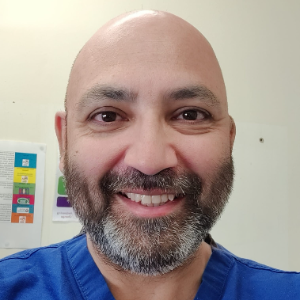Artificial Joints
Artificial Joints, also known as joint prostheses, have become indispensable in the field of orthopedics, offering a transformative solution to individuals suffering from severe joint degeneration, trauma, or arthritis. These innovative devices aim to restore function, alleviate pain, and enhance the overall quality of life for patients facing compromised joint health. One of the most prevalent applications of artificial joints is seen in total joint arthroplasty, where the entire damaged joint is replaced with a prosthetic implant. Total hip arthroplasty (THA), for instance, involves the replacement of the hip joint with components made of durable materials such as metal, plastic, or ceramic. Similarly, total knee arthroplasty (TKA) addresses knee joint degeneration through the implantation of artificial components designed to mimic the natural movement of the knee. Artificial joints are meticulously engineered to replicate the intricate biomechanics of the human body. They are composed of materials that are biocompatible and durable, ensuring longevity and minimizing the risk of adverse reactions within the body. The advancements in implant design and materials have contributed to improved wear resistance, reduced friction, and enhanced overall performance, allowing recipients to enjoy a more natural range of motion. These prosthetic joints are tailored to various anatomical locations, including the hip, knee, shoulder, elbow, and ankle. Customization is crucial to achieving optimal fit and functionality, ensuring that the artificial joint integrates seamlessly with the surrounding tissues. Surgeons carefully select the appropriate implant size, shape, and type based on the patient's unique anatomy and the specific joint involved. Artificial joint surgeries have undergone significant refinements over the years, with minimally invasive techniques becoming increasingly prevalent. These approaches result in smaller incisions, reduced blood loss, and quicker recovery times for patients. The advent of robotic-assisted surgeries has further enhanced precision, enabling surgeons to achieve unparalleled accuracy in implant placement. Postoperative rehabilitation is a crucial aspect of the artificial joint implantation process. Physical therapy and exercise regimens are tailored to each patient to optimize recovery, strengthen surrounding muscles, and ensure the long-term success of the joint replacement. Patient education plays a vital role in fostering a proactive approach to joint health, emphasizing lifestyle modifications and regular follow-ups with healthcare providers. In conclusion, artificial joints represent a remarkable milestone in orthopedics, offering a lifeline to individuals grappling with debilitating joint conditions. As technology evolves, the integration of artificial joints into orthopedic practice continues to redefine the possibilities for restoring mobility, function, and quality of life for countless patients around the world.

Stephen S Tower
University of Alaska Anchorage, United States
Marcos Brioschi
American Academy of Thermology, United States
Wagih El Masri
Keele University, United Kingdom
Arif Akkok
Lake Erie College of Osteopathic Medicine, United States
Akash Ganguly
Warrington and Halton Hospitals NHS FT, United Kingdom
Sajid Ali
The Dudley Group NHS Foundation Trust, United Kingdom




Title : The UK profemur recall and implant cobaltism
Stephen S Tower, University of Alaska Anchorage, United States
Title : The tomographic phenotype and the genotype of wormain bones
Ali Al Kaissi, National Ilizarov Medical Research Center for Traumatology and Orthopaedics, Russian Federation
Title : New treatment of muscle contracture and joint contracture through muscle regeneration with mitochondrial dynamics
Ki Ji Lee, Busan Medical University, Korea, Republic of
Title : New treatment of sarcopenia through muscle regeneration with mitochondrial dynamics
Ki Ji Lee, Busan Medical University, Korea, Republic of
Title : The prevalence and association of self-reported depression symptoms with musculoskeletal pain and quality of life among pregnant women
Youssef Masharawi, Tel Aviv University, Israel
Title : Bipolar hemiarthroplasty under local anesthesia (2%)
Ketan Karabhai Parmar, Aayush Multispecialty Hospital, India